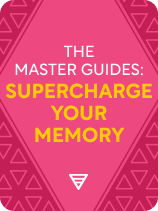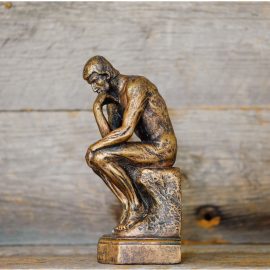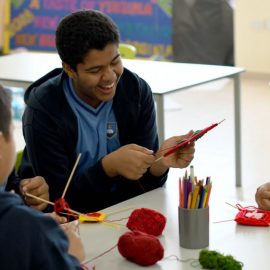

This article is an excerpt from the Shortform book guide to "The Master Guides: Supercharge Your Memory" by Shortform. Shortform has the world's best summaries and analyses of books you should be reading.
Like this article? Sign up for a free trial here.
What are the most effective note-taking strategies? How can these strategies help you remember things better?
The three most effective note-taking strategies are clarifying your learning goals before starting, creating multisensory associations with the material, and actively engaging with the content by taking notes about your original notes. These strategies can help you retain more information while you’re studying.
Continue reading to discover how to use these effective note-taking strategies to improve your learning skills.
How to Take Effective Notes
According to learning practitioners, effective note-taking strategies are key to capturing and retaining new information. Let’s explore how to enhance your note-taking with three techniques that leverage your brain’s natural affinity for association: Clarify your note-taking goals, create multisensory associations, and take notes about your notes.
Strategy #1: Clarify Your Note-Taking Goals
In Limitless, teacher, life coach, and motivational speaker Jim Kwik asserts that the first step in learning effective note-taking strategies is to learn how to clarify what you’re interested in learning (or what you must learn) from the material you’re studying. In other words, identify your goal in studying that specific material and then take notes based on that goal. This approach will help you filter through the information you’re getting and look for what’s relevant to that goal.
Some experts have suggested a practical way to clarify what you intend to learn from your material: When you read a book (or an article, an essay, or any other reading assignment), first skim through it, looking at headings and pictures to get a general sense of what it’s about before you read it in detail. This helps you absorb the material better because it’s easier to embed something in your memory (like the details of the book) if you relate it to something that’s already there (the information you got from skimming).
Strategy #2: Create Multisensory Associations
Experts agree that creating multisensory associations when taking notes can greatly boost their effectiveness as memory aids.
Try incorporating as many of your senses as you can into your mental representations of things you want to remember. The more senses you incorporate, the more cues you have to remind you of the memorized information. If applicable, imagine how something looks, smells, sounds, feels, and tastes. Effective note-taking strategies will always try to increase the associations you can make between the new material and pre-existing knowledge. By incorporating multisensory associations, you grow the amount of pre-existing knowledge you can tie to.
Strategy #3: Take Notes About Your Notes
Actively engaging with your content—by taking notes about your notes—enhances the effectiveness of your note-taking. This involves:
Simplifying the information you’re working with: Think of easier words to describe the concept and focus on the main ideas rather than getting lost in the details. One way to do this is to use mind maps to organize your notes. Mind maps are visual representations of topics that typically start with a central idea or concept and branch into related ideas connected with lines, colors, and images. By visually organizing the material, mind maps help distill complex information into more digestible components, making it easier to identify and remember key points. Effective note-taking strategies include simplifying information because it advances the material into another stage of mental processing.
Taking notes with the dual-column method: Divide your note page into two parts with a vertical line down the center. Capture the key concepts on the right side and summarize them on the left using short phrases.
You can also add highlights and additional notes to the original ones to actively engage with them and spotlight key points. For example, write down comments and questions that come to mind as you read.
Exercise: Create Multisensory Associations
Experts suggest that incorporating sensory information can enhance memory recall. Let’s practice effective note-taking strategies by creating multisensory associations to remember information.
- List the titles of four random movies. (For example, you might list E.T. the Extra-Terrestrial, Jaws, Star Wars III, and Ratatouille.)
- How would you associate imagery with the first movie on your list? (For example, for E.T. the Extra-Terrestrial, you might visualize the iconic flying bicycle silhouette against the moon.)
- How would you associate sound or music with the second movie on your list? (For example, for Jaws, you might recall the ominous two-note motif representing the approaching shark.)
- How would you associate a physical sensation with the third movie on your list? (For example, for Star Wars III, you might imagine the weight and hum of wielding a lightsaber.)
- How would you associate a specific smell with the fourth movie on your list? (For example, for Ratatouille, you might recall the rich aroma of freshly cooked French cuisine.)

———End of Preview———
Like what you just read? Read the rest of the world's best book summary and analysis of Shortform's "The Master Guides: Supercharge Your Memory" at Shortform.
Here's what you'll find in our full The Master Guides: Supercharge Your Memory summary:
- Memory retention methods from a diverse group of experts
- Three techniques for enhancing your note-taking abilities
- Three active learning strategies to help you solidify your long-term memory






